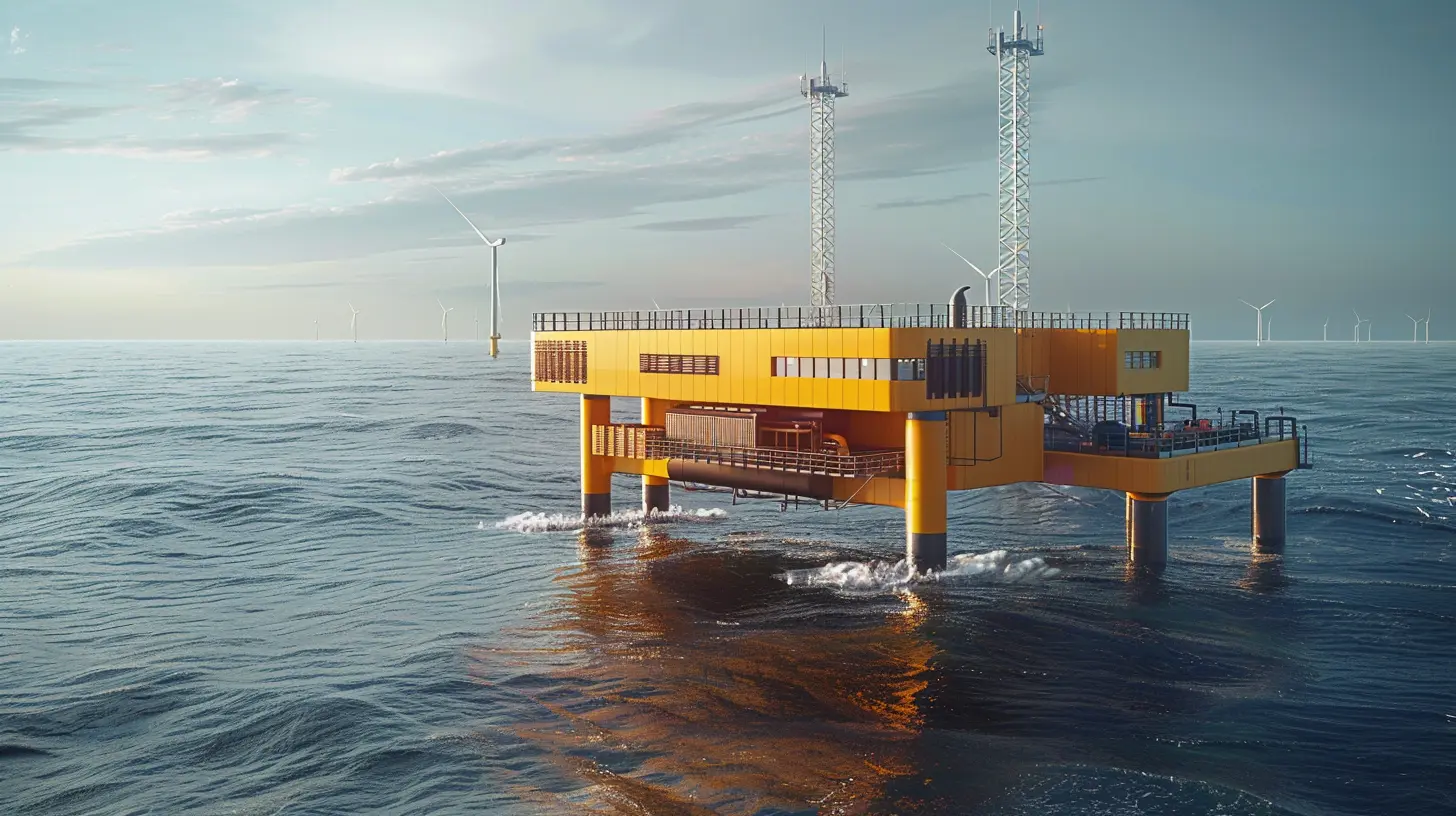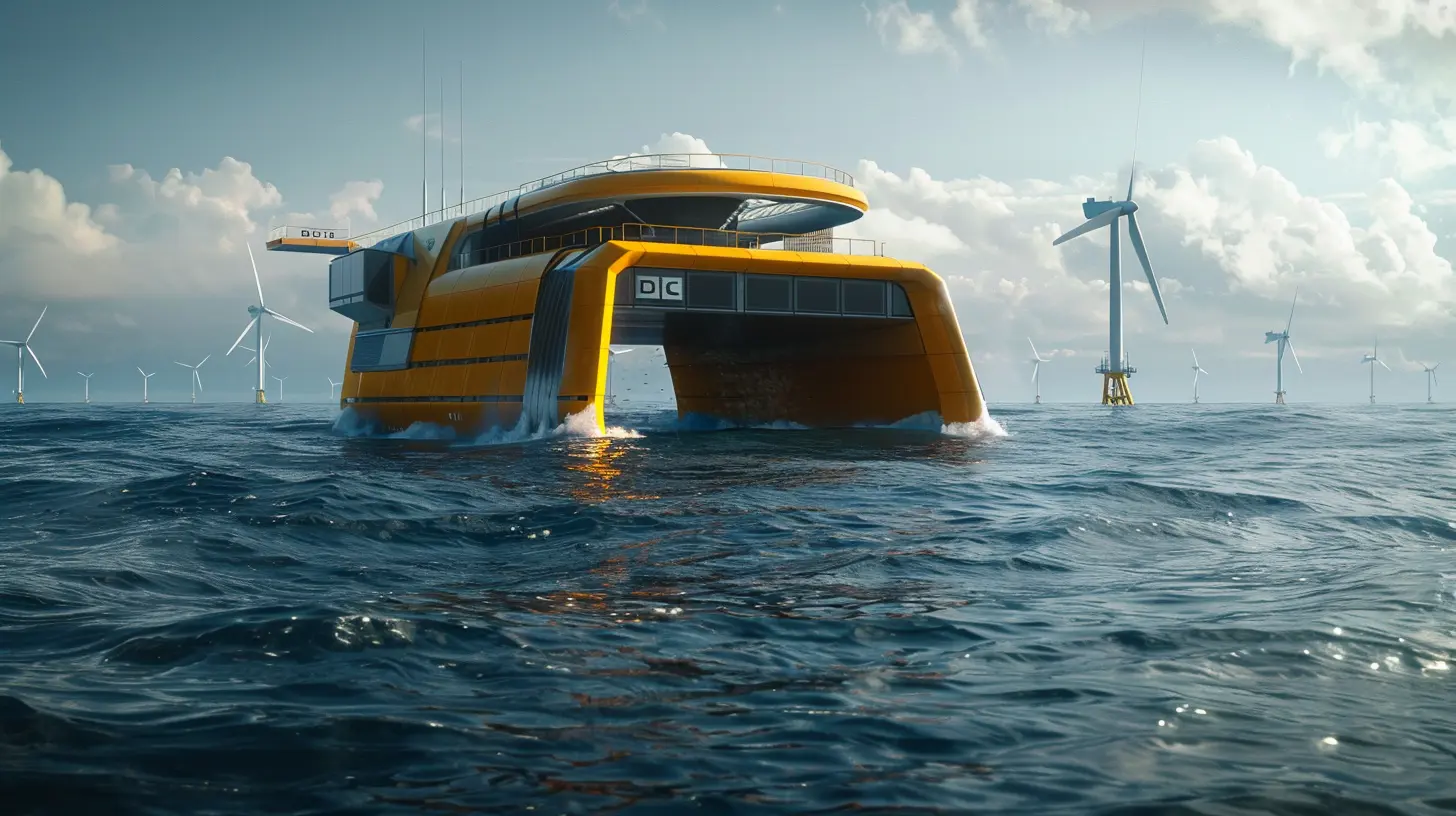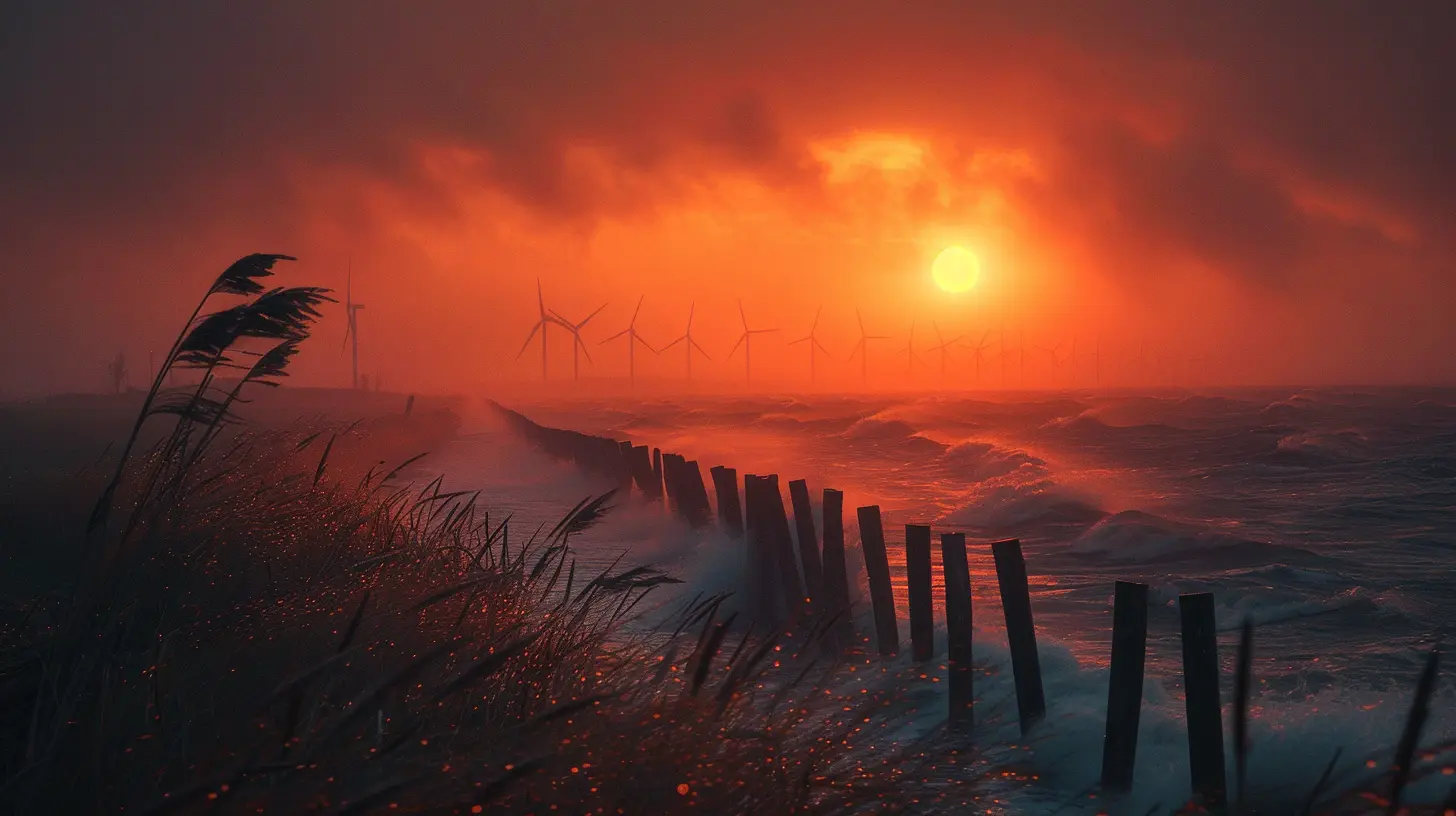The Latest in Offshore Wind Farms: A Deep Dive
5 October 2025
Offshore winds whisper secrets of sustainable futures, and guess what? We're finally tuning in. Welcome aboard this breezy journey into the cutting-edge world of offshore wind farms — where technology meets nature, and turbines rise like futuristic titans from the sea.
Gone are the days when solar panels stole all the clean energy glory. Offshore wind is the new kid on the renewable block, and it's not shy about making waves. So, if you’ve ever wondered how we can power cities using sea breezes, buckle up. This is your deep dive.
🌊 Blowing in the Right Direction: Why Offshore Wind?
Let’s start simple. Ever stood on a beach and felt the wind slap your face harder than Monday morning reality? That ferocious force is untapped energy gold. Offshore wind farms harness these mighty gusts to spin turbines—spinning turbines = electricity = cleaner, greener power.Unlike onshore wind farms, offshore setups feast on constant, stronger, and less turbulent wind. They're far from noise-sensitive communities, and they don’t hog up land, which is always a bonus.
And here's the kicker—just one turn of a modern offshore wind turbine can power your entire Netflix binge for hours or even days. Mind blown?
⚙️ A Quick Refresh: How Do Offshore Wind Farms Work?
Imagine a sleek ballet of blades gliding through salty air. Offshore wind turbines work on the same basic principle as their landlocked cousins: wind turns blades → blades spin a rotor → rotor turns a generator → voilà, electricity.But here’s where it gets cool (and a bit spicy).
Offshore turbines are massive, often taller than skyscrapers, sitting atop foundations buried deep in the seabed (or floating, which we’ll get into). They’re connected to substations by underwater cables, and from there, power zips back to the mainland through high-voltage magic.
Cool, right? It’s like an underwater orchestra playing power symphonies for the grid.
🚀 What’s New with Offshore Wind Farms in 2024?
They say the wind doesn’t wait, and neither does tech. Here's what's got the offshore wind industry buzzing this year:1. Floating Wind Farms Take Center Stage
Remember when wind turbines had to be bolted into the seafloor? Not anymore. Enter: floating wind farms.These bad boys are mounted on floating platforms, anchored but not fixed. That means they can be installed in deeper waters, where winds are stronger and steadier.
Countries like Norway, Japan, and the U.S. are investing big in floaters. Think about it – floating turbines are the Teslas of the wind world.
Oh, and did I mention Hywind Tampen in Norway? It just became the world’s largest floating wind farm, pumping out electricity for offshore oil and gas platforms. Talk about irony with a twist of green.
2. Bigger Turbines, Bigger Dreams
Size matters in the wind game. The latest turbines are absolute beasts—some spanning over 850 feet and generating up to 18 megawatts. That’s enough to power over 20,000 homes per turbine. One turbine!GE’s Haliade-X and Siemens Gamesa’s new SG 14-236 DD are leading the charge here. These machines are game-changers, pushing output up and costs down.
3. AI and Machine Learning Blow Into Town
Here’s where tech gets all sci-fi. AI is being used to forecast wind patterns, optimize turbine performance, and even predict when maintenance is needed. It’s like giving turbines a brain and a sixth sense.Machine learning helps spot issues before they become expensive problems. Think of it as the wind farm’s personal mechanic who never sleeps.
🌍 Global Winds Rising: Who’s Leading the Charge?
Offshore wind is going global, and the race is on. Let’s peek into who's setting the pace:🇬🇧 United Kingdom
Call it the King of Offshore Wind. The UK leads with over 13 GW of installed capacity. Projects like Dogger Bank (the world’s biggest offshore wind farm) are putting the UK at the top of the leaderboard.🇨🇳 China
Never one to lag, China has zoomed up the charts. With aggressive targets, new installations, and a focus on local manufacturing, China is writing its own offshore wind playbook.🇺🇸 United States
The U.S. was slow to start but is now catching wind (literally). Thanks to the Biden administration’s clean energy push, projects along the East Coast and California are finally moving from blueprint to reality.🇩🇰 Denmark
Home of Ørsted, one of the biggest wind energy firms, Denmark punches way above its weight, leading innovation and sustainability efforts across Europe.💰 Dollars in the Wind: The Economics of Offshore Farms
Let’s talk money. Offshore wind isn’t cheap science fair stuff—it’s multi-billion-dollar investment territory. But wait, it's getting cheaper.Thanks to tech leaps and economies of scale, the cost of energy from offshore wind has fallen around 70% in the past decade. That’s wild.
Plus, governments are throwing subsidies, tax incentives, and green bonds into the mix. It’s like a buffet of financial support to make wind power irresistible.
And job creation? A booming gust. The offshore wind industry is predicted to create hundreds of thousands of jobs globally within this decade.
🌿 Environmentally Speaking: Is Offshore Wind All Good?
We’d love to say it’s all sunshine and seabirds, but let’s get real. Offshore wind has its share of environmental questions.🐟 Marine Impact
Turbine construction can disturb marine life. Whales don’t care for pile-driving noises, and some fish might be, well, thrown off their groove.That’s why environmental impact assessments are crucial. Groups are working on “quiet” construction methods and studying wildlife behaviors to make turbines more sea-friendly.
👀 Visual Pollution
Out of sight isn’t always out of mind. Some coastal residents aren’t thrilled about turbines dotting their ocean views. Floating turbines further offshore might soften this concern.Bottom line? Offshore wind isn’t perfect, but it’s a heck of a lot cleaner than fossil fuels.
🔋 The Grid Puzzle: Where Does the Power Go?
Imagine generating gigawatts of clean electricity but having nowhere to put it. Big yikes.The energy grid is the bottleneck right now. It needs serious upgrades to handle the influx of offshore wind. We’re talking smarter grid tech, better storage, and improved transmission lines.
Countries like Germany and the Netherlands are building "energy islands"—floating hubs that collect, store, and transmit offshore wind power more efficiently. Think of them as wind power pit stops on the sea.
🧭 Future Forecast: What’s Next on the Horizon?
Offshore wind is no longer science fiction. It's present tense. Still, the future holds even more promise. Here’s what’s on the radar:- Hydrogen Hybridization: Excess wind energy could be used to produce green hydrogen. That’s right—offshore wind powering fuel cell cars and planes one day.
- Cross-border Projects: Nations teaming up to build shared wind farms and transmission lines—like a United Nations of Clean Power.
- Autonomous Maintenance Drones: Robots flying out to inspect blades? Yup, that’s coming too.
🧠 So, Why Should You Care?
Offshore wind is more than giant fans in the sea. It's part of a global shift that affects everyone. More wind power means less pollution, more jobs, stronger economies, healthier oceans, and cooler tech.And whether you're a tech nerd, an eco-warrior, or just someone who likes your lights on without frying the planet, offshore wind has something for you.
📝 Final Thoughts: Catching the Wind at the Right Time
Offshore wind farms are no longer distant silhouettes on the horizon—they're front and center in the clean energy revolution. They're bold, they're beautiful, and they're here to stay.In a world desperate for cleaner answers, the ocean’s breeze might just be our biggest untapped blessing. So, let's catch the wind, ride it forward, and power our future one turbine twist at a time.
all images in this post were generated using AI tools
Category:
Renewable EnergyAuthor:

Michael Robinson
Discussion
rate this article
1 comments
Xander Cook
Impressive advancements, but challenges remain significant.
October 7, 2025 at 3:27 AM

Michael Robinson
Thank you! You're right; while we've made great strides, addressing these challenges is crucial for the future of offshore wind energy.


